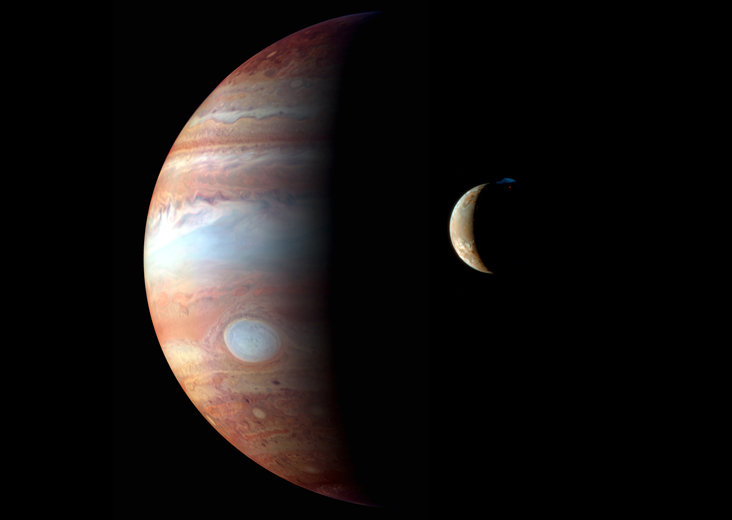
In the religious mythology of classical antiquity, the ancient Greek god Cronus (as well as his Roman counterpart, Saturn) was a member of the first generation of Titans who became the ruler of the Universe and the master of time by overthrowing his father, Uranus. While trying to avoid meeting the same fate by his children, Saturn later swallowed each one of them as they were born, only to be finally defeated by his son Jupiter, who eventually took his father’s place as the god of the sky and the ruler of gods and mortals alike. Akin to the father of his mythological namesake, a wandering Jupiter has probably wreaked a similar havoc early in the Solar System’s history, according to a new study, by throwing into the Sun several primordial “Super-Earth”-type planets that might have already formed, soon after the formation of the Sun. Yet, contrary to ancient myth, the gravity of the newly formed Saturn prevented the planetary king of the Solar System from meeting the same fate, by pulling the gas giant outward. Nevertheless, this inward-and-then-outward journey by Jupiter caused a wide planetary obliteration, which eventually allowed for the formation of a second generation of mass-depleted terrestrial planets, one of which was Earth.
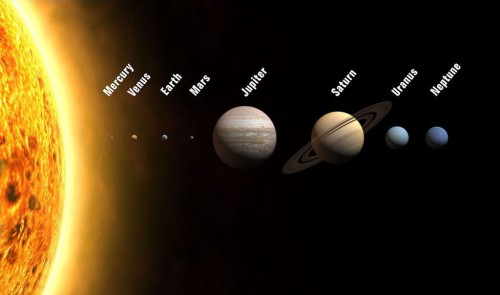
Contrary to most exoplanetary systems that have been discovered to date, our Solar System can be described as a tidy and well-organized place, with all the eight major planets neatly grouped together in two different and distinct categories: four small rocky, terrestrial planets orbiting close to the Sun, which are followed by four Jovians, or gas giants, that are lying farther out, with a large asteroid belt in between. Traditional planetary formation models indicated that the structure of other exoplanetary systems should closely follow that of our own. Yet the advent of exoplanetary research during the last two decades revealed nothing of the sort. Most of the exoplanetary systems discovered to date have been found to be surprisingly compact, featuring planets that lie very close to their host stars, with orbits that are substantially smaller than Mercury’s 0.39 AU-wide orbit around the Sun (1 AU is the average Earth-Sun distance). Furthermore, many of the planets in these compact, tight orbits belong to a class of planets called “hot Jupiters”—strange gas giant worlds similar to Jupiter in our Solar System that zip around their host star in a matter of days, causing them to experience scorching hot surface temperatures that can reach up to a few thousand Kelvins. In addition, the huge bulk of exoplanets and exoplanet candidates that NASA’s planet-hunting space telescope has discovered to date, since it was launched in 2009, fall into the “Super-Earth” category—alien worlds with sizes between that of Earth and Neptune and masses up to 10 times that of our planet. These findings have clearly indicated that Super-Earths seem to dominate the galaxy, yet are surprisingly absent in our own Solar System.
In an effort to address these pressing issues in our current understanding of planetary formation and evolution, a team of U.S. astronomers, consisting of Dr. Konstantin Batygin, an assistant professor from the California Institute of Technology, and Dr. Gregory Laughlin, a faculty professor at the University of California, Santa Cruz, ran a series of computer simulations of the Solar System’s early evolution right after the formation of the Sun, in order to study the implications of the “Grand Tack Hypothesis.” Proposed in 2011 by a team led by Kevin Walsh, an astronomy research scientist at the Southwest Research Institute in Boulder, Colo., this hypothesis posits that the structure of our Solar System as it is today is the result of Jupiter’s inward-and-then-outward journey through the early Solar System, shortly after the latter was formed, at a time when the young Sun was still surrounded by the primordial disk of gas and dust, out of which the planets emerged. “We refer to Jupiter’s path as the Grand Tack, because the big theme in this, is Jupiter migrating toward the Sun and then stopping, turning around, and migrating back outward,” says Walsh. “This change in direction is like the course that a sailboat takes when it tacks around a buoy.”
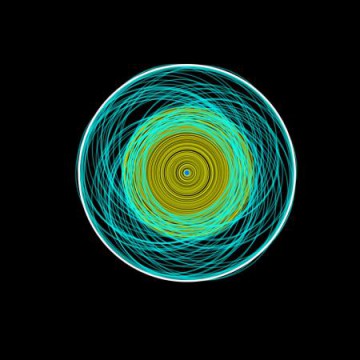
The results of the simulations by Batygin and Laughlin, which appear in a new study published in the March 23 issue of the Proceedings of the National Academy of Sciences, show that Jupiter’s migration during its formative years fundamentally altered the overall structure of the early Solar System, by gravitationally interacting with and sweeping up along its path all the small planetesimals inside the protoplanetary disk, sending them on a fiery doom toward the Sun. More specifically, in this scenario, as Jupiter was forming and growing bigger during the first 10 million years of its life, it started to lose angular momentum through its interaction with the vast disk of gas that surrounded the young Sun, causing the newly formed planet to fall inward. This inward migration eventually brought Jupiter as close as 1.5 AU from our home star, approximately where Mars lies today. The researchers’ simulations showed that the young Jupiter would have continued in its plunge toward the Sun were it not for Saturn, with which it got locked into a 3:2 mean motion orbital resonance where it completed three orbits around the Sun for every two orbits by Saturn. “Jupiter would have continued on, eventually being dumped onto the Sun if not for Saturn,” says Batygin. “That resonance allowed the two planets to open up a mutual gap in the disk, and they started playing this game where they traded angular momentum and energy with one another, almost to a beat.”
This gravitational dance between Jupiter and Saturn disrupted large amounts of material from the protoplanetary disk that would otherwise have been left unscathed, causing it to be dumped into the Sun, while the two planets were thrown outward as a consequence, toward their current locations. “Modern calculations of planetesimal formation suggest that planetesimals grow very rapidly to radii of the order of 100 km and do not experience severe interactions with the nebula,” write Batygin and Laughlin in their study. “Under such conditions, the entire solid component of the nebula swept up by Jupiter’s resonances will be captured and transported inward. In particular, if one adopts the conservative assumption of a minimum-mass solar nebula, and an oft-quoted solid-to-gas ratio of about 1 percent, the total amount of mass swept up by the resonances is approximately 10−20 Earth masses, about an order of magnitude greater than the cumulative mass of the terrestrial planets.”
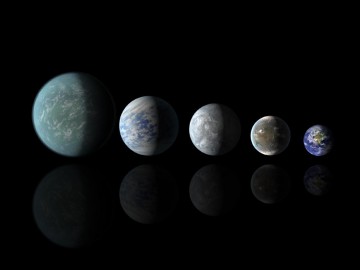
One important prediction of this model is that Jupiter’s inward motion, besides dragging protoplanetary material along, would have destroyed any pre-existing planets that may have also formed closer in, by throwing them into the Sun, while paving the way for the formation of a second-generation of planets: Mercury, Venus, Earth, and Mars. And if other exoplanetary systems are any indication, these pre-existing planets were probably Super-Earth-like. “Given that the formation of tightly packed close-in systems is ubiquitous in the galaxy, it can be reasonably speculated that at the time of Jupiter’s inward journey, a similar population of first generation planets existed in the Solar System,” write the researchers. “If such planets formed, however, they were destroyed.”
The new study also addresses several nagging problems of current planetary formation models and particularly those regarding the size of the Solar System’s four terrestrial planets. For instance, Mars should have grown to be at least five times more massive than it actually is, according to theoretical predictions, since there would have been more gas and dust available in the early Solar System, with increasing distance from the Sun. Yet Jupiter’s inward trek ultimately halted the growth of the terrestrial planets, while also clearing much of the material in the asteroid belt. The dumping of 10-20 Earth masses’ worth of material into the Sun due to the gas giant’s gravity severely depleted the material of the protoplanetary disk, leading to the formation of the comparatively small and mass-depleted four terrestrial planets. “Our work suggests that Jupiter’s inward-outward migration could have destroyed a first generation of planets and set the stage for the formation of the mass-depleted terrestrial planets that our solar system has today,” says Batygin. “All of this fits beautifully with other recent developments in understanding how the Solar System evolved, while filling in some gaps.”
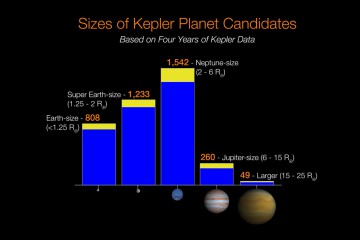
The overarching theme of the study by Batygin and Laughlin is that the general processes of planetary formation in the galaxy are more or less universal, with our Solar System having the same initial conditions that could have created a structure similar to that seen in all the other compact exoplanetary systems that feature planets with very close and tight orbits, only to be altered in the process by the presence of the massive Jupiter, early in its history, which caused the formation of a planetary system that looks like an oddball. “Indeed, it appears that the Solar System today is not the common representative of the galactic planetary census,” says Batygin. “Instead we are something of an outlier. But there is no reason to think that the dominant mode of planet formation throughout the galaxy should not have occurred here. It is more likely that subsequent changes have altered its original makeup.”
The only way to test the predictions of the Grand Tack hypothesis is to conduct more observations with our current and future instruments, like the Transiting Exoplanet Survey Satellite and the James Webb Space Telescope, which will become operational in the next few years. And, as is always the case with astronomical research, to learn more about the great unknown of the Cosmos is to learn more about ourselves and how we got here.
Want to keep up-to-date with all things space? Be sure to “Like” AmericaSpace on Facebook and follow us on Twitter: @AmericaSpace




Quite an interesting concept. The key phrase, “the general processes of planetary formation in our galaxy are more or less universal…” most likely indicates a high probability that countless solar systems like ours populate the entire Universe with the current exoplanets discoveries pointing to just another type of solar system formation.